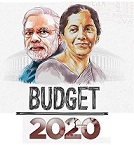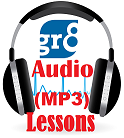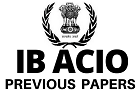sponsored links
- Newspapers :
- Advantages : Flexibility; Timeliness; good local market coverage; broad acceptance; high believability.
- Disadvantages : Short life; Poor reproduction quality; small "pass along" audience.
- Television :
- Advantages : Combines sight, sound, and motion; appealing to the senses; high attention; high reach
- Disadvantages : High absolute cost; high clutter; fleeting exposure; less audience selectivity.
- Direct mail :
- Advantages : Audience selectivity; flexibility; no ad competition within the same medium, personalization
- Disadvantages : Relatively high cost; "junk mail' image
- Radio :
- Advantages : Mass use; high geographic and demographic selectivity; low cost
- Disadvantages : Audio presentation only; lower attention than television, non-standardized rates structures; fleeting exposure.
- Magazines :
- Advantages : High geographic and demographic selectivity; credibility and prestige; high-quality reproduction; long life; good pass-along readership.
- Disadvantages : Long ad purchase lead time; some waste circulation; no guarantee of position.
- Outdoor :
- Advantages : Flexibility; high repeat exposure; low cost; low competition.
- Disadvantages : Limited audience selectivity; creative limitations.
- Yellow Pages :
- Advantages : Excellent local coverage; high believability; wide reach; low cost
- Disadvantages : High competition; long ad purchase lead time; creative limitations
- Newsletters :
- Advantages : Very high selectivity; full control; interactive opportunities; relative low costs.
- Disadvantages : Costs could run away.
- Brochures :
- Advantages : Flexibility; full control; can dramatize messages
- Disadvantages : Over production could lead to runaway costs.
- Telephone :
- Advantages : Many users; opportunity to give a personal touch
- Disadvantages : Relative high cost unless volunteers are used.
- Internet :
- Advantages : High selectivity; interactive possibilities; relatively low cost.
- Disadvantages : Relatively new media with a low number of users in some countries.

Bhavya Vasudevan
sponsored links










 English Vocabulary from
English Vocabulary from









Thank u so much....Pls once explain me about the number of LokSabha seats that can be represented by each state and full details about Lok Sabha seats...Thanks in advance.
ReplyDeletehi friends,i have a doubt in coding section,pls try to clarify
ReplyDelete"economics is not money"=="ka la ho ga"
"demand and supply economics"=="mo ta pa ka"
"money makes only part"=="zi la ne ki"
"demand makes supply economics"=="zi mo ka ta"
the question is what is the code for "work and money"
answer =="pa la tu"
but how????????pls explain me
according to your question,
Deleteeconomics-- ka, money-- la, makes-- zi, demand supply-- mo ta, and-- pa.
work and money-- pa la tu. ( "work" code is not given in the above references. ... "tu" is also not present ). so "work"-- "tu".
hope you understand...
LOK SABHA
ReplyDeleteAndhra P 42
Arunachal 2
Assam 14
Bihar 40
CG 11
Goa 2
Haryana 10
HP 4
J&K 6
JH 14
Karnataka 28
Kerala 20
MP 29
MH 48
Mani 2
Megha 2
Mizo 1
Naga 1
Odissa 21
Punjab 13
Raj 25
Sikkim 1
TN 39
Tripura 2
UK 5
UP 80
WB 42
Union Terri.
And man & nico. 1
Chandi 1
Dadra & NH 1
Delhi NCT 7
Laksha 1
Pudu 1
=543
+ 2 nominated
GROSS TOTAL =545 members
@SANDEEP K
2nd comment reasoning solution
From 1st &2nd sentence ECONOMICS = KA
Now, from 1 & 3
MONEY = LA
Also from 2 & 4
Demand/supply=mo/ta
Hence
AND=PA
Now no any term/word "WORK" came in the question
Hence,
The right and will be for WORK AND MONEY=
PA LA TU
As pa = and,la=money,tu didn't come in question as well as WORK.
OK.
That's all.
@SANDEEP K